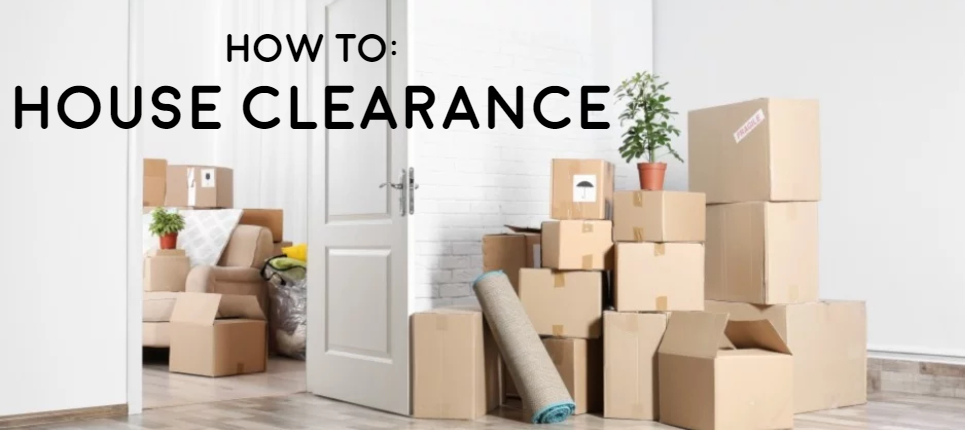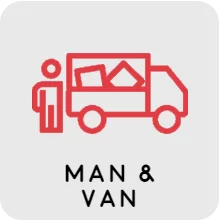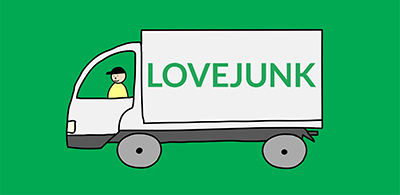House Clearance Guide
Undertaking a house clearance can be a bit of a mission. But if you fancy a challenge, the following tips should help ensure everything goes as smoothly as possible.
- Working out the time needed for the house clearance
- Decide what to keep and what to junk
- Estimate how much stuff you have for your house clearance
- Arrange for the house to be cleared
- And finally, don’t forget…
- Done and dusted!
1. Working out the time needed for the house clearance
Planning the time needed to perform the house clearance will ensure everything else goes smoothly. A good rule of thumb for two people undertaking a house clearance is to allow ½ day for each room (and for these purposes a small garden equals one room) that needs to be cleared.
This might seem a lot but, like most things in life, giving yourself enough time to do a job goes a long way to taking away all the stress that comes with it.
2. Decide what to keep and what to junk
Once you’ve allocated some time in your diary for the house clearance, the next stage is to go through everything to decide which items you and your family wish to keep, which you want to sell or give away, and which items are good only for the bin.
Engaging a declutterer to help is a good idea if you’re not very good at saying goodbye. Alternatively a simple approach for categorising items in a house clearance is to use the traffic light system. Using coloured stickers (red for ‘keep’, orange for ‘sell/donate’, and green for ‘bin’), go round the house room by room and label everything that you see. Try to be as ruthless as possible – only use the red stickers for items you will definitely use – and remember that most things these days can be bought new in Tesco for less than the price of a pizza!
Once you’ve labelled everything (and if you’re left with loads more green stickers than red – maybe you should get someone a little more objective to help!), the next step is to shift items around the house so that those with same the coloured stickers are grouped in the same place. Always start by putting the green stickered items together first – because it doesn’t matter if you damage these when moving them around and it will leave you with a decent amount of space to manhandle the good stuff into once you’ve finished.
3. Estimate how much stuff you have for your house clearance
Well done. That’s the really difficult bit done. But before you pick up the phone to arrange to take it away, you need to work out how much stuff you have.
An easy way of guestimating volume is to think in terms of a standard domestic skip. How many standard skips – the 6-yard type one commonly sees outside a domestic building site – do you think your stuff would fill? Armed with this key fact, walk around each room and make a note of how many skips each sticker category would fill. You don’t need to be super precise, just estimate to the nearest half skip. Also, bear in mind that items with a green sticker (that’s the stuff destined for the tip), particularly things like old flat back cupboards, can often be broken down to take up less volume.
Once you’ve done this, add it all up and get a total volume estimate for each category and plan how you will move everything.
4. Arrange for the house to be cleared
You should now have volume estimates for (a) Things to keep, (b) Things to donate or sell and (c) Things to bin. Dealing with each separately:
(a) Moving things from A to B
For specialists help, The British Association of Removers is a great place to start. They provide useful information on removal firms, including contacts of which firms operate in your area. Members are regulated and required to meet certain high standards – so you won’t be dealing with cowboy operators.
Alternatively, you could hire a van and do it yourself. You’ll certainly save some money this way, but on the downside moving stuff (especially furniture) can be a lot of hard work and packing and loading carefully can make a big difference to whether your items arrive at the new location in one piece!
(b) Sale & donation
The web is a great place to sell unwanted household items; the best-known channel is eBay. Here is loads of advice about using eBay, but be warned – whether you’re selling a Van Gogh or a comic book, buyers love to ask questions! So prepare yourself for a very full inbox.
More bulky items are probably best sold through a local auction house or 2nd hand furniture dealer. Check your local paper or yellow pages for names of local operators, and if you’d like an idea of value before delivery, emailing them in advance with a few digital photos often helps.
Local charity shops receive most things other than electrical appliances and furniture that does not have a current fire-safety certificate.
Finally, if you’re considering donating furniture, try the Furniture Reuse Network, a UK wide network of social enterprises that aim to maximise furniture reuse.
(c) Disposal
DIY – as with traditional removal, if you have the energy and the time, disposing of junk is something you can do yourself. Depending on the amount, you can either cram it all into the boot of your car or hire a van to take it to the local dump or alternatively call your local council to arrange a bulky waste collection (often free or heavily subsidised). With council collections, remember it typically takes a week or two to arrange and collections tend to be from outside the premises only.
Skip Hire – a sort of in-between solution is to hire a skip. The skip is dropped off outside the premises and you fill it. Skips are charged at a flat rate and require a skip permit (and possibly also a parking suspension) from the council if parked on road. Prices vary widely depending on the skip size and the cost of any permit and parking suspension. Check the price of a skip in your area.
Clearance & disposal companies – the easiest solution is to contact AnyJunk who clear, load and dispose of everything you need to get rid of, from single items to multiple truckloads, from anywhere on the premises. They charge according to the amount of junk cleared, turn up in two-hour arrival windows, and they also reuse and recycle wherever possible. Alternatively, there is a myriad of waste contractors and man & van type operators that can be found on Google. If you decide to opt for one of these before making a booking, please always ask for a reference, proof that they are properly licensed to carry waste, and confirmation that their employees are properly insured against any damage caused to your the premises. Finally, if you’re based in London, you could try our sister business Lovejunk.com (https://www.lovejunk.com/), which is a marketplace for man & van rubbish clearance companies, and helps you find your nearest and cheapest local licensed waste carrier.
5. And finally, don’t forget… Be very careful about documents
Identity theft is a growing problem in the UK – and you should try to protect yourself from this by treating confidential documents carefully. If you wish to dispose of bank documents, credit card receipts or health records consider getting a shredder and destroying the documents.
Equally, be careful not to throw out documents you might later need. This is especially true if you are undertaking a house clearance for a deceased relative. Don’t get rid of any official-looking paperwork until the estate has been settled. If you are in any doubt talk to the solicitor or executor dealing with the estate. More advice is available from Action Fraud.
Your health & safety
If you are moving around a lot of items in a house that have been undisturbed for some time you are likely to dislodge a large amount of dust. Always open plenty of windows before you start and consider getting a dust mask, particularly if clearing items from a loft or cellar.
Take extra care when lifting heavy items. Bend from the knees, keeping a straight back. If you are carrying something with someone else always discuss how you will lift the item and where you will move it first – this helps avoid accidents through the confusion, not to mention dents in the house’s plasterwork!
6. Done and dusted!
If you’ve managed to deal with everything then you’ve earned the chance to have a cup of tea and put your feet up. Let’s hope you haven’t cleared a comfy armchair and the kettle in the process! If, however, just reading this guide has made you feel exhausted, why not call us or book online now to get your house clearance done and dusted.
Other resources
If you’re planning other clearouts, you might like some of our other guides:












